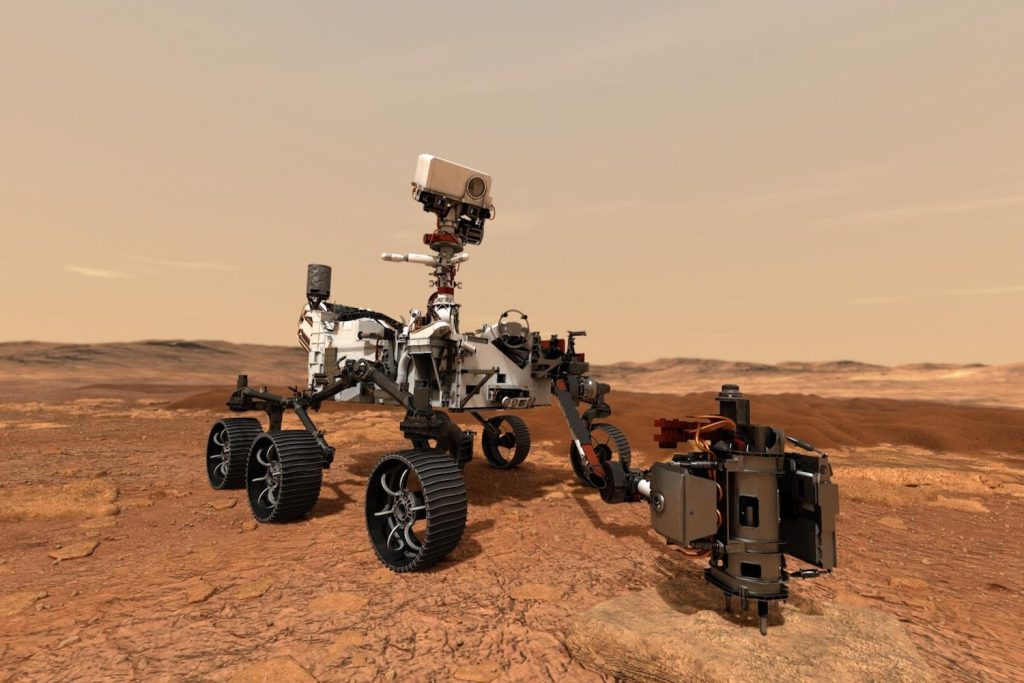For more than three years, NASA’s Perseverance rover has been roaming the Martian landscape, collecting bits and pieces of rocks to be probed by scientists here on Earth. The space agency had come up with an elaborate plan to fly those samples from the Red Planet to Earth using a fleet of robots, but it later became obvious that NASA was having trouble executing the return part of its mission. Now, NASA is turning to space company Rocket Lab for ideas on how to bring back rock samples from Mars with a more cost-effective and timely plan.
NASA selected Rocket Lab, the space industry’s rising star, to offer an alternative way to retrieve rock samples from the Martian surface and bring them to Earth. The company has been assigned with the task of developing an end-to-end mission concept for a fraction of the projected cost of NASA’s Mars Sample Return (MSR) mission that can be completed several years earlier than the space agency’s current timeline, Rocket Lab announced.
This is the first attempt at bringing samples from Mars to Earth, and NASA is in desperate need of help due to budget constraints that have plagued the agency’s science quests as of late. In April, NASA put out a call to solicit ideas from the private space industry, as well as the larger community of different NASA centers, for a revised plan for the mission that could return the samples earlier and at a lower cost.
NASA had been struggling to fulfill its mission, which involves a group of robots, landers, and orbiters working on and off Mars. The Perseverance rover is currently collecting rocky samples from Mars before stowing them away for a Sample Retrieval Lander to load them up onto a small rocket, from which they will be launched towards another spacecraft in orbit around Mars that is designed to drop them off at Earth. Once the samples land here, scientists will be able to study them to gather clues regarding the Red Planet’s early habitability and whether life once existed on Mars.
The mission had come under heavy scrutiny for going over its original budget and timeline. In September 2023, an independent review board (IRB) issued its final report on MSR, referring to it as a “highly constrained and challenging campaign,” with “unrealistic budget and schedule expectations from the beginning.” In response, NASA began considering an alternative architecture for its complex mission and paused the program while trying to sort out its budgeting.
Originally, MSR was capped at a $7 billion budget to return the samples in the 2030s. As of today, however, the mission as it is would require an $11 billion budget, with an estimate of returning the samples to Earth by 2040. During a press conference in April, NASA officials hinted that the agency could bring back the samples sooner had it not been for cuts to the agency’s annual budget. NASA’s 2024 budget was $2.31 billion short of what the space agency was hoping to receive. Still, it was unclear whether NASA would choose the same mission architecture or opt for a less complex one.
While NASA develops elaborate, and oftentimes costly, schemes for planetary science, Rocket Lab, on the other hand, promises more bang for your buck when it comes to exploring the cosmos. “Retrieving samples from Mars is one of the most ambitious and scientifically important endeavors humanity has ever embarked upon. We’ve developed an innovative mission concept to make it happen affordably and on an accelerated schedule,” Peter Beck, Rocket Lab’s founder and CEO, said in a statement. “Rocket Lab has been methodically implementing a strategy for cost-effective planetary science in recent years, making us uniquely suited to deliver a low cost, rapid Mars Sample Return.”
Rocket Lab previously delivered NASA’s CAPSTONE orbiter to the Moon to test the orbital stability planned for the Lunar Gateway space station. The company also built twin satellites for NASA’s ESCAPADE mission to Mars.
NASA is having to rely more on its commercial partners as it receives less funding for its science missions while the spaceflight industry continues to grow. By now, it’s hard to imagine the space agency probing the universe for answers to pressing questions like, “are we alone?” without the help of a few private startups. The recent MSR shift is a clear indication that things just aren’t the way they used to be, and NASA is having to adjust to its new reality.
More: A Bonus ‘Hitchhiker’ Will Come Back From Mars in Perseverance’s Sample Tubes

